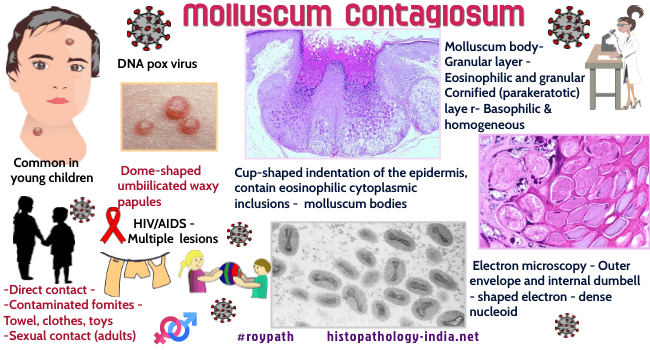|

Custom Search
|
|
Infectious Disease Online Pathology of Molluscum Contagiosum
|

|
Molluscum contagiosum is benign viral disorder caused by a large brick-shaped DNA virus of the poxvirus group - Molluscum Contagiosum Virus. Age: May occur in all age groups. The disease is most commonly noted in young children (less than 5 years of age). May also occur in young adults due to sexual contact. Site: This is a disease of the skin and occasionally of the mucous membrane. Common sites include - Body, lower abdomen, arm, legs, inner thigh, buttock and genital area. Rare sites include eyelids, lips and mouth. Clinical presentation: Molluscum contagiosum, consists of a variable number of small discrete, waxy, skin-coloured, dome shaped papules. These are 2-4 mm in size with an umbilicated center. In a fully developed lesion a small amount of a curd-like substance can be expressed from the center. Occasionally a papule of molluscum contagiosum appears markedly inflamed. The lesion involute spontaneouly. In immunocompromised patients ( Example: AIDS ) hundreds of lesions of molluscum contagiosum are noted with little tendency to involute.
In lesions with follicular molluscum contagiosus , multiple greatly dilated hair follicles are present in the dermis filled with molluscum bodies.
|
|
|
Copyright © 2002-2022 histopathology-india.net



